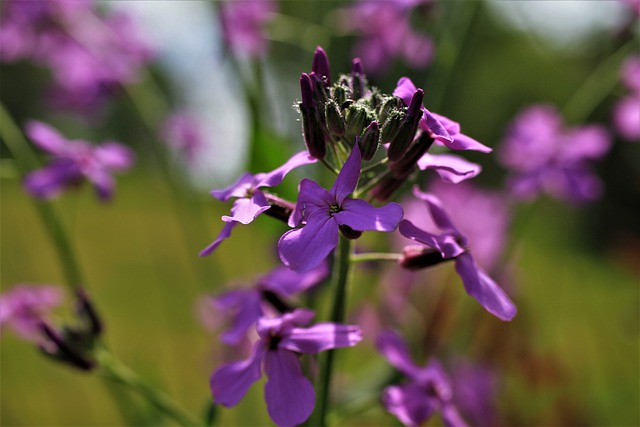
 |  |  |  |  |
 |  |
Dame’s-violet is a biennial plant. In the first year, it develops a rosette of leaves, in the second year a flower stalk (35-130 cm long) is formed. In the upper part, the peduncle is branched, covered with thick hair - both leaves and peduncles. The leaves are simple, without leaflets, more often whole, oval-lanceolate, pointed, toothed. The upper ones are narrowly lanceolate, sessile, the lower ones on petioles.
The flowers are large, bisexual, bisemisymmetric, arranged in a wide cluster at the top of the peduncle. Often the bunch reaches up to 60 cm in size. Petals violet-pink, rarely white, 15-19mm long, inverted oval, narrowed at the base.
Peduncles 8-25 mm long, scaly during fruiting. The fruit is a pod that opens in two parts. Evening primrose blooms starting from May and continues until August. The fruits ripen in late summer, early autumn.
For medicinal purposes, the herbs (stems, leaves, flowers) and Dame’s-violet seeds are used in folk medicine. Dame’s-violet are collected during the flowering of the plant, in May-June, seeds in August-September. Lettuce is dried in a shady and well-ventilated place.
Stored in paper bags, in a dry place for no longer than 2 years.
The chemical composition of the Dame’s-violet has been little studied. The aerial part of the plant contains <0.2% essential oil, saponins and flavonoids. The seeds contain a lot of drying vegetable fat (24-30%).
Medicinal significance
Dame’s-violet preparations are used as a means to strengthen the body, after various serious illnesses or operations, when the body feels "burnt out". The plant is also useful as a diuretic, in case of various edemas, swellings and kidney stones. It is also good as a diaphoretic to treat colds, flu and upper respiratory catarrh.
The plant has been known in folk medicine since ancient times, but it cannot be said that it has gained particular popularity as a medicinal product for oral use. Although it is used as already mentioned, in folk medicine this plant is more widely used for cosmetic purposes. From where did this custom also travel to cosmetology and even today the Dame’s-violet can be found in various cosmetic products.